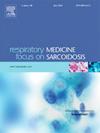The association between dysglycaemia and exercise capacity in cystic fibrosis
IF 3.5
3区 医学
Q2 CARDIAC & CARDIOVASCULAR SYSTEMS
引用次数: 0
Abstract
Background
People with cystic fibrosis-related diabetes (CFRD) are known to have reduced exercise capacity (EC), which in turn is related to increased morbidity and mortality. The aim of this study was to examine whether dysglycaemia may independently influence exercise capacity in people with CF (pwCF).
Methods
Results from clinically conducted cardiopulmonary exercise tests were analysed retrospectively in 139 pwCF alongside routine clinical data. Subjects were grouped according to glycaemic status; normal glucose tolerance (NGT; n = 43) and dysglycaemia; impaired glucose tolerance (IGT; n = 17) and CFRD (n = 79). Anthropometric data was assessed using chi-squared tests. Regression models were developed using analysis of co-variance (ANCOVA) to evaluate predictors of exercise capacity and correlations between variable were assessed using the Pearson method.
Results
Maximal oxygen uptake (VO2max) was reduced in the CFRD group compared to NGT and IGT (p < 0.01), however this was dependent on higher FEV1 % in the NGT and IGT groups (p < 0.001) and significant differences were no longer present when FEV1 was accounted for. A higher proportion of those with dysglycaemia were ventilatory limited (NGT; 42 %, IGT; 72 % & CFRD; 65 %, p < 0.05). Age, gender, BMI, intravenous antibiotic days and FEV1 % were significant predictors of VO2max across all patients (adjusted R2 = 0.528, p < 0.001). HbA1c is a small but significant predictor of VO2max in patients with dysglycaemia (p < 0.05).
Conclusions
Adults with CFRD have reduced VO2max compared to NGT or IGT which is mediated by poorer lung function and higher overall disease burden. In individuals with CFRD, better glycaemic control is associated with a greater EC.
求助全文
约1分钟内获得全文
求助全文
来源期刊

Respiratory medicine
医学-呼吸系统
CiteScore
7.50
自引率
0.00%
发文量
199
审稿时长
38 days
期刊介绍:
Respiratory Medicine is an internationally-renowned journal devoted to the rapid publication of clinically-relevant respiratory medicine research. It combines cutting-edge original research with state-of-the-art reviews dealing with all aspects of respiratory diseases and therapeutic interventions. Topics include adult and paediatric medicine, epidemiology, immunology and cell biology, physiology, occupational disorders, and the role of allergens and pollutants.
Respiratory Medicine is increasingly the journal of choice for publication of phased trial work, commenting on effectiveness, dosage and methods of action.
 求助内容:
求助内容: 应助结果提醒方式:
应助结果提醒方式:


